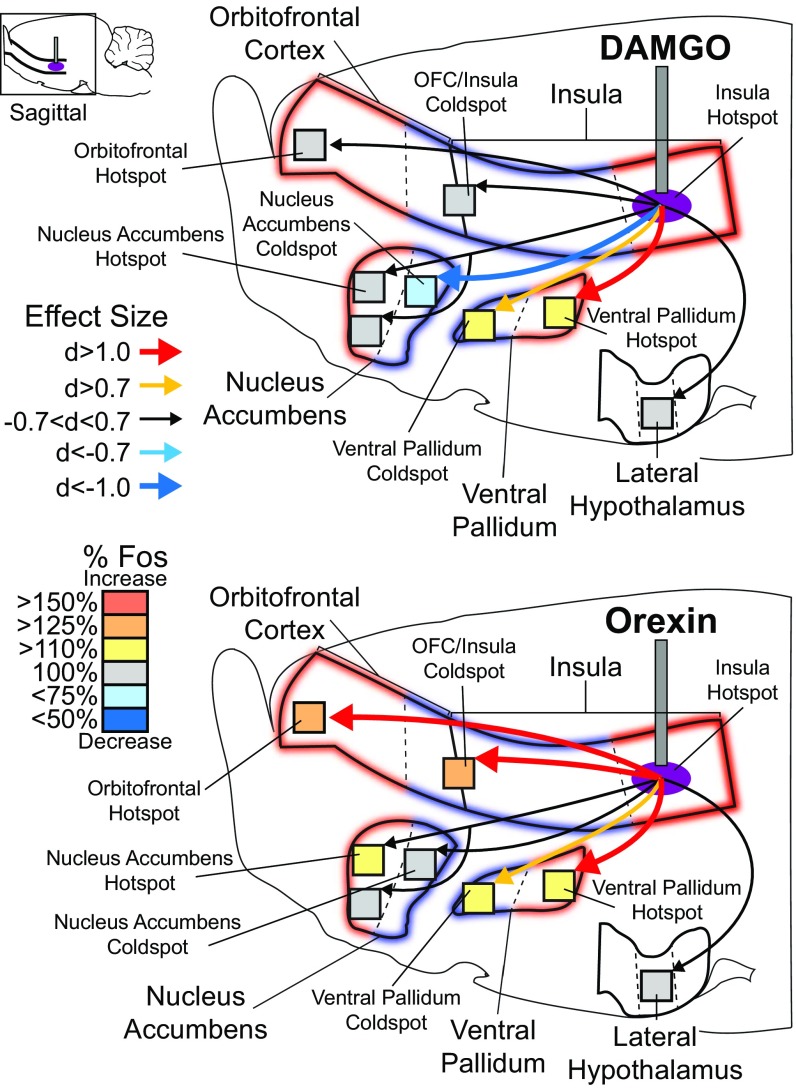Fig. 5.
Insula hotspot stimulation recruits larger brain circuitry for hedonic enhancement. DAMGO microinjections in the far-caudal insula hotspot did not alter Fos in the rostral OFC hotspot (d = 0.565), in the OFC/insula coldspot (d = 0.308), in the NAc rostrodorsal shell hotspot (d = 0.068), or in the rostroventral NAc (d = −0.128) but caused 32% suppression of Fos in the NAc caudal shell coldspot (d = −1.605). DAMGO microinjections in the far-caudal insula hotspot also increased Fos in the VP hotspot by 122% (d = 1.4) and in the VP coldspot by 118% (d = −0.94). Unlike DAMGO stimulation of the OFC hotspot, insula hotspot stimulation did not alter Fos in the lateral hypothalamus (d = −0.409). In contrast to DAMGO stimulation, orexin microinjection in the far-caudal insula hotspot increased Fos in both the rostral OFC hotspot (elevation = 133%; d = 1.2) and OFC/insula coldspot (elevation = 143%; d = 2.06). Orexin microinjection in the far-caudal insula hotspot also mildly increased Fos by 121% in the NAc rostrodorsal shell hotspot (d = 0.669) but did not increase Fos in the rostroventral NAc shell (d = −0.128) or NAc caudal shell coldspot (d = −0.57). Orexin microinjection in the far-caudal insula hotspot elevated Fos to 114% in the caudal VP hotspot (elevation =; d = 1.14) and to 112% in rostral VP coldspot (d = 0.564), and, like DAMGO, did not alter Fos in the lateral hypothalamus (d = 0.0).

